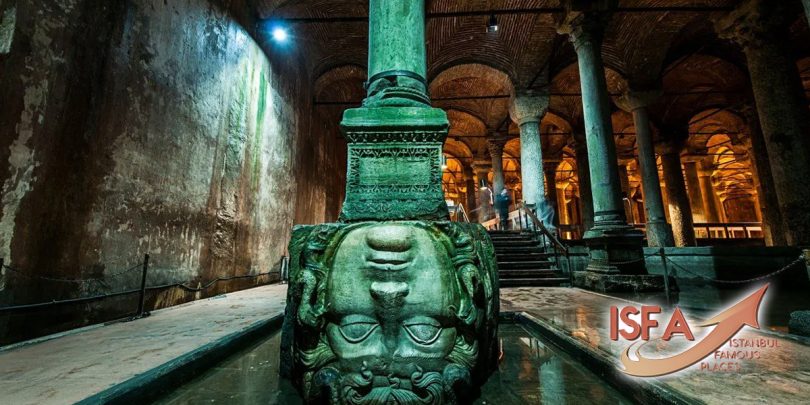Constantinople, today’s Istanbul, is full of enchanting and mysterious stories. The city witnessed empires from the Roman and Byzantine to the Ottoman empires, with each leaving its ever-lasting impression. From the streets of Istanbul to its walls, alleys, and museums, you can find an imprint of old settlements that one’s rejoiced on this land.
One splendid feature of Istanbul is its magnificent architecture and town planning. Whether we talk of mosques, old empirical buildings, pavillions, palaces, gardens, and parks, the city speaks volumes about its cultural heritage. The Turkish hammam houses, with ancient ones still in use, and historical monuments make the city unique and worth visiting.
And when we talk of history, we just cannot stop talking about its several hundred water cisterns. Yes, you heard it right! The city of Istanbul sits on several hundred underground cisterns, but one such cistern open to visitors is the Basilica Cistern, aka “Yerebatan Saray.”
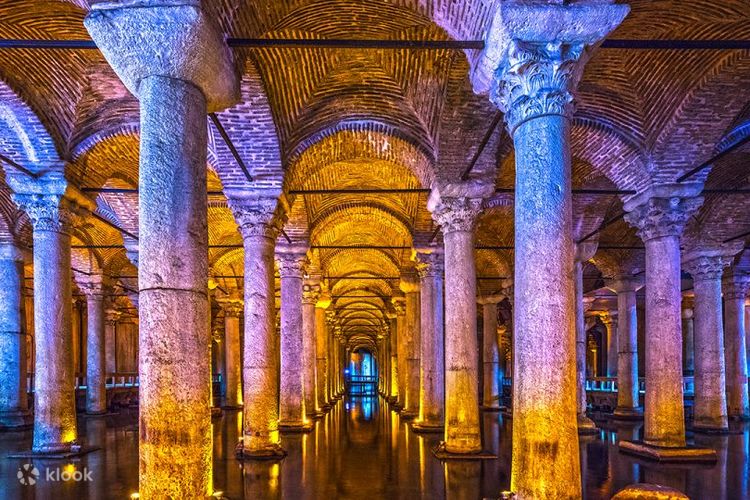
The Unique and Marvelous Basilica Cistern
Basilica Cistern is also known as the “Underground Palace.” And rightly so because it is nothing short of a classic palace building. This water cistern is also a marvelous example of the Byzantine era.
Byzantine architecture gained a lot of importance when Roman Emperor Justinian became the ruler, especially between A.D. 527 and 565.
Byzantine architects were quite diverse as their architecture comprised mosaics on the vaults and heightened domes, an outcome of sixth-century engineering techniques. Besides, marble columns, inlays, stone pavements, and even gold coffered ceilings were an imminent part of Byzantine architecture.
Basilica Cistern was named after the Stoa Basilica on the First Hill of then Constantinople, as it lies below it.
A glimpse into the making of Basilica Cisterns
As per ancient texts, Basilica had gardens, was surrounded by a colonnade, and faced the Hagia Sophia. Prominent historians opine that Emperor Constantine built a structure that Emperor Justinian later reconstructed after the Nika riots of 532, the most crucial time that severely devastated the city.
These ancient texts claim that 7,000 slaves were involved in constructing this magnificent cistern, the main body supplying water to the Great Palace of Constantinople and other buildings on First Hill.
Not only this, but the cistern also delivered water to Topkapı Palace after the Ottoman conquest of Constantinople in 1453, following which the city was named Istanbul.
Spectacular Physical Features of Basilica Cistern
Basilica Cistern is a size of a traditional cathedral, as this underground chamber is approximately 138 meters (453 ft) by 65 meters (213 ft). Besides, it is about 9,800 square meters (105,000 sq ft) in area, which implies that it can hold 80,000 cubic meters of water.
A total of 336 marble columns support the ceiling of the underground chamber, with each column 9 meters high. These columns sit in 12 rows, with each column lying at a distance of 5 meters from the other.
These columns depict the Corinthian style – slender fluted columns with elaborate capitals – and have no engravings. But except for one, with raised pictures of a Hen’s Eye, branches, and tears. As per old texts, these “tears” on the column probably are a tribute to those slaves who lost their lives while constructing this magnificent cistern.
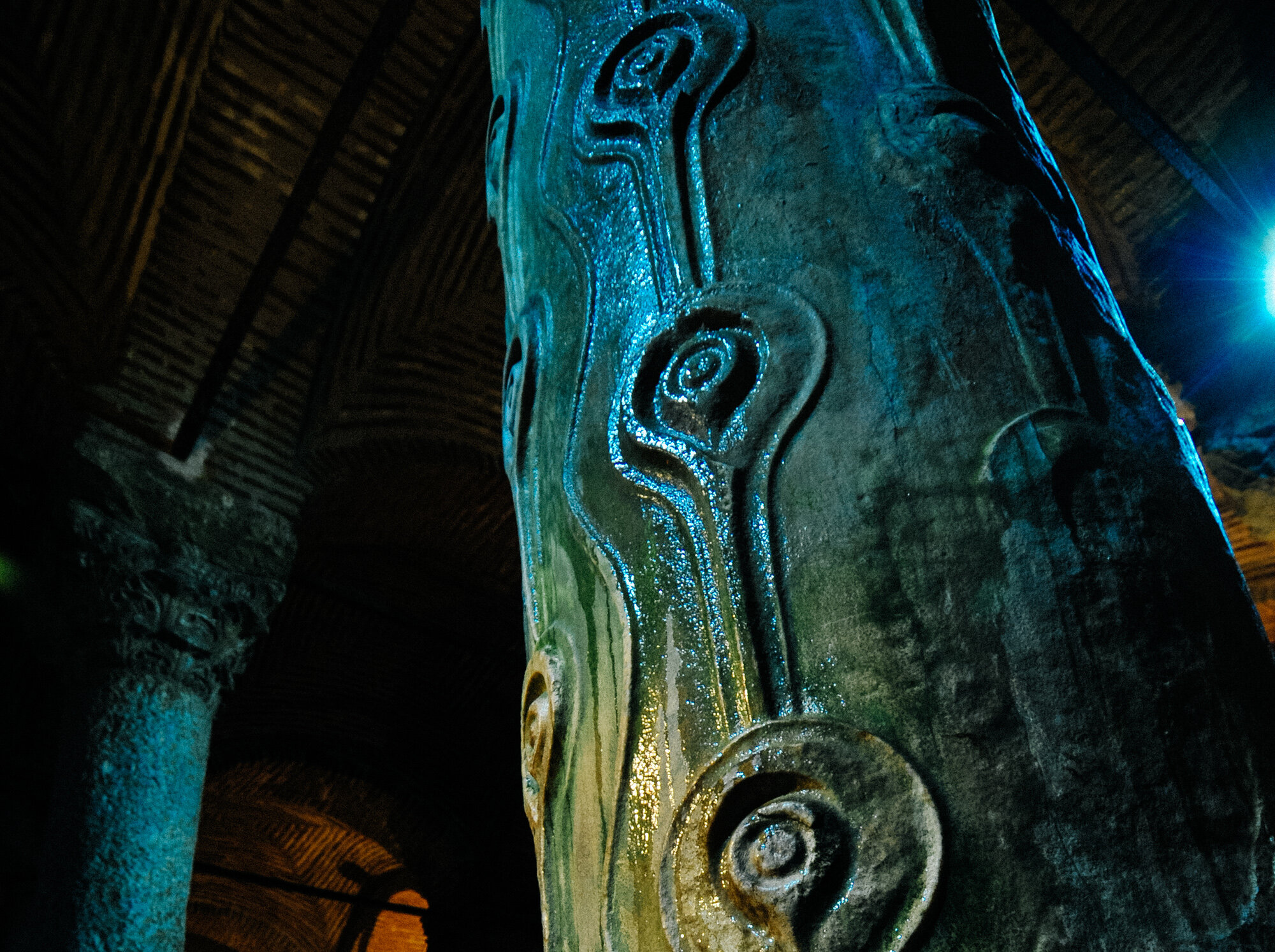
You enter the underground chamber after descending 52 steps surrounded by a 4-meter thick brick wall. As the cistern no longer meets the city’s water needs, the water in the underground chamber comes from the Eğrikapı Water Distribution Centre in the Belgrade Forest to keep the feeling alive.
The Belgrade Forest lies some 19 kilometers from the city and is home to deciduous trees. The terrain lies between Istanbul’s Sarıyer and Eyüp districts and is home to historical reservoirs. Another place you might want to travel to while in Istanbul!
Peeping into Basilica and its restoration
This cistern has undergone restoration several times, taking away some bits of its historical significance with it. The first restoration is as old as the 18th century when Ottoman sultan Ahmed III ordered its restoration in 1723 to architect Muhammad Ağa of Kayseri.
After the second restoration ordered by Sultan Abdulhamid II, the cracks in the masonry and damaged columns were repaired in 1968. Additional restoration was done in 1985 by the Istanbul Metropolitan Museum.
How about we tell you that once you could see the cistern while in boats? Yes, before the 1985 restoration, people used to hop on boats to travel around the marble columns and feel the cold air reminiscent of old times.
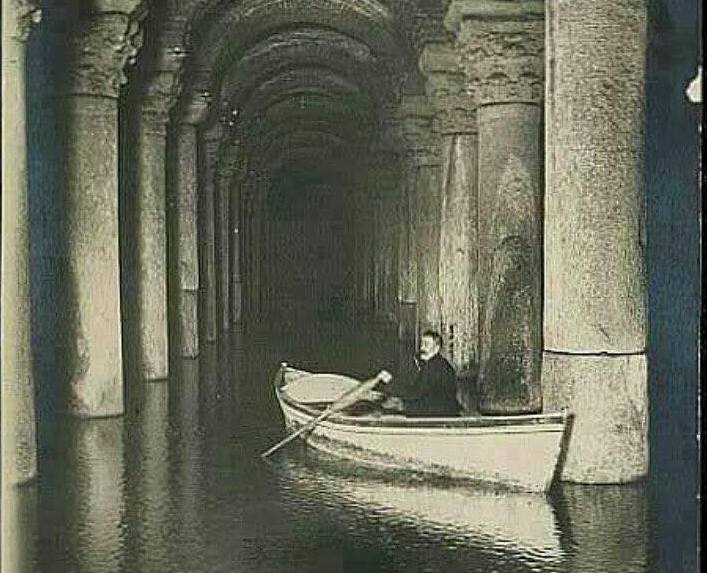
In 1985, 50,000 tons of mud were removed from the cistern, and platforms were erected instead, replacing boat tours. People could now walk on these platforms as they see the columns closely.
After opening to the public in 1987, it went through cleaning and restoration works in 1994. But it was again closed in 2017 to make the structure quake-resistant.
Istanbul is an earthquake-prone area, and that is why demolition works or renovations throughout the city take place to make them earthquake-resistant.
The cistern is now open to the public as of 2022. The Istanbul Municipality made great efforts to make the experience of exploring the cisterns worth the visit. As you enter, you get this spooky feel with lighting, colors, and sounds echoing as people talk and walk. Also, you need a ticket to take a walk in the cistern. The fee is some 300 Turkish liras ($15.76). You can buy the ticket online at the Basilica Cistern Museum’s official website.
Some Intriguing Facts About Basilica Cistern
- Over 2.2 million tourists come to visit this underground chamber. It is among the most popular tourist attractions of the city, along with Hagia Sophia and Topkapi Palace.
- Experts believe that Byzantine emperors ordered the construction of 100 other cisterns after the Basilica ones, as the city needed a fresh water supply. Around 70 cisterns have been discovered, but Basilica Cistern is the largest of all in Istanbul to date.
- The bottom of the cistern is brick-lined. They used bricks to prevent water leakage, and the corners were rounded or reinforced to prevent leaks. So if you wonder about the rounded walls and no corners, this was the main reason.
- Basilica Cistern could hold about 80,000 cubic meters of water. This was enough to cater to the city’s water needs back then
- As per ancient scriptures, the construction of this magnificent Basilica took 38 years and around 7,000 slaves.
- Historians believe that Basilica Cistern is one of the oldest historical heritage of the Byzantine era and is some 1,500 to 1,700 years old.
- Basilica Cistern was once a dumping site! Yes, before it was opened to the public in 1987, it was a neglected dumping area. Even dead bodies were found in this cistern, and took extensive cleaning work before the government at the time decided to bring the site to tourism.
- Many prominent directors shot their films in this underground chamber. Some scenes of the famous James Bond film “From Russia With Love” was shot in Basilica Cistern. Next time you see “The Water Diviner” by Russell Crowe on the Gallipoli War, look for traces of the Basilica Cisterns. You’ll be surprised.
Did you know that Basilica Cistern is also an archaeological wonder?
The cistern comprises 336 columns to support the small domes above them. The columns of 140 meters in length and meters in width give an impression as if they are endless. As the columns lie approximately 5 meters apart, it makes the cistern an architectural wonder. Also, these columns seem to have come from different ancient cities as they are different from each other.
Did you know that Petrus Gyllius, a Dutch traveler, rediscovered this lost cistern in 1545?
While on a quest to explore Byzantium ruins in Istanbul, he stumbled across the Basilica Cistern. As per texts, Gyllius learned from locals about an ancient cistern. He learned that in ancient times people were able to draw buckets of water from some wells and were even able to catch fish. This intrigued Gyllius, and he decided to explore by descending into one of the wells. This well was behind an ordinary yet modern Ottoman building. Traveling by boat, he explored the spectacular cistern, leading to a Renaissance rediscovery.
The Legend Behind the Eerie Medusa Heads in Basilica Cistern
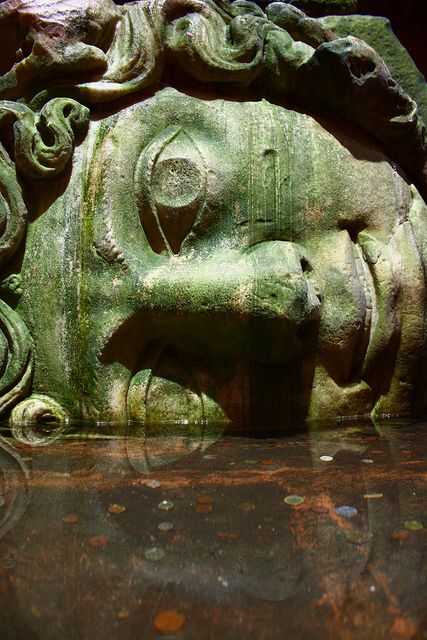
Before explaining why there are Medusa heads in Basilica Cistern, let’s learn who Medusa was.
Medusa is a mythical monster in Greek mythology. She represents a winged female with hair of snakes. Unlike other Greek monsters, known as Gorgons, she was often represented as an extremely attractive woman. As she was the only mortal Gorgon, Perseus, her slayer, was able to kill her by beheading her. It is said that from the blood that spurted out of her when she was slain, her two sons, Chrysaor and Pegasus, were born. Poseidon, who raped and impregnated Medusa, was their father.
It is believed that her severed head had the power to turn the one who sees it into stone.
Well, don’t be afraid. That will not be the case when you visit Basilica and take a good look at the Medusa columns. The legend goes that the Medusa head columns in the Basilica were for the protection of the cistern so that it does not sustain any damage.
On the other hand, many historians point out the relationship between religion and faith as the reason for the statue being upside down.
No one really knows the underlying meaning behind why the Medusa heads were placed there. But these columns really add that spooky feel to the place.
Make a wish!
Near the teary-eyed column, there lies a small wishing pond where you’ll see coins in the water. If you have one, throw it in the pond and make a wish. People also wish at the Medusa column. They say wishes come true here, but you can only know if you make a wish and throw a coin. All the best to you!
Basilica Cistern tells a lot about Istanbul’s history and the Byzantine era. It is a marvelous architectural example that stuns one with so many different columns. It is definitely worth the time and money spent. Do book a ticket to have a tour of this historical marvel.

